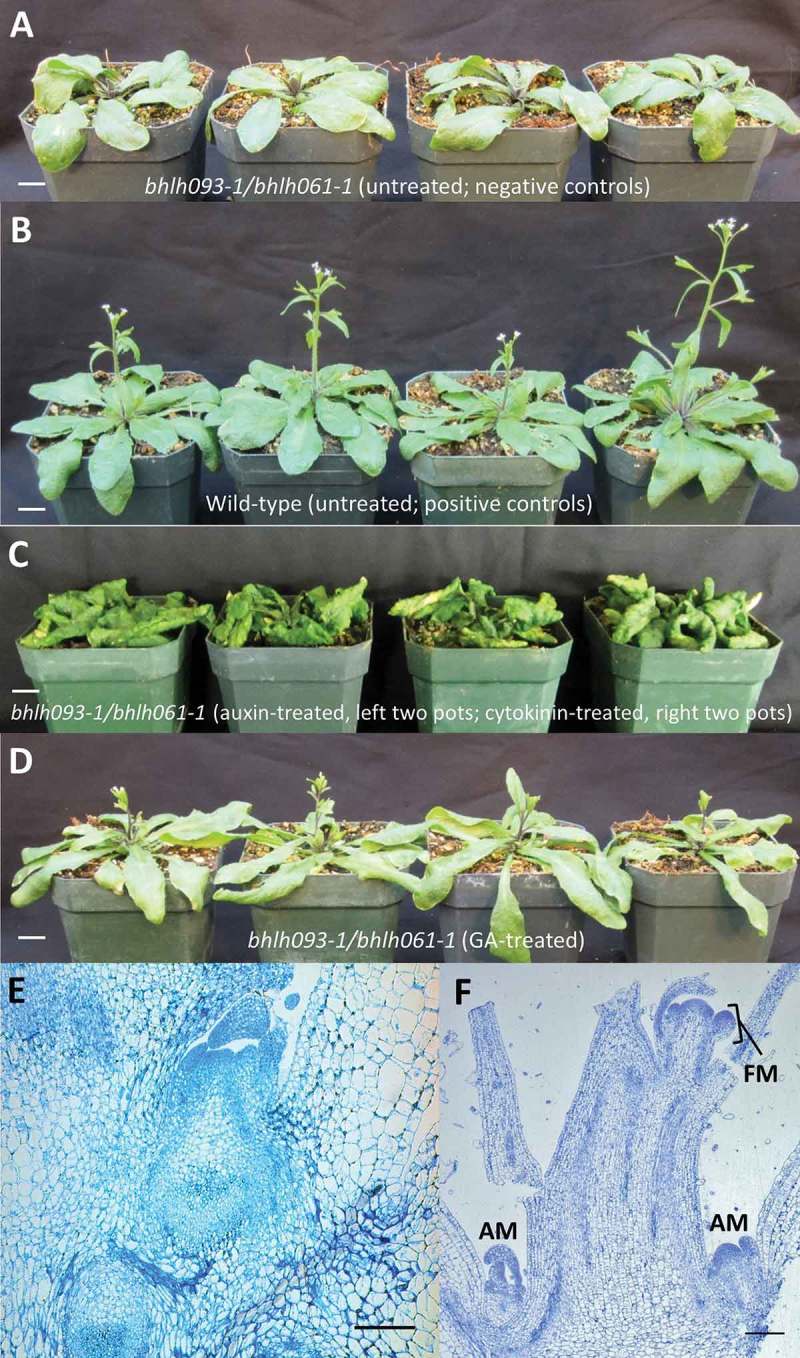Figure 4.

Application of gibberellin (GA3) rescues the bhlh093-1/bhlh061-1 double mutant toward a wild-type phenotype. Representative images of plants at 30 d post-germination. A untreated bhlh093-1/bhlh061-1 double mutant (negative control); B mock-treated wild-type plants as positive controls; C bhlh093-1/bhlh061-1 double mutant with SAM-applied auxin (left two pots) and cytokinin (right two pots) (note that these plants were photographed at 42 d post-germination (when severe curling occurs in wild-type plants as well) to test if a longer application may rescue the bolting phenotype); D bhlh093-1/bhlh061-1 double mutant with SAM-applied GA3. The size bars for panels A – D correspond to 1 cm. Microscopic images: GA3 treatment of the bhlh093-1/bhlh061-1 double mutant (applied to shoot apex) partially rescues the phenotype (D); GA3 treatment of wild-type plants (E) leads to early development of inflorescence meristem and stem growth, as well as early initiation of axillary meristem growth. Scale bars = 300 µm. Abbreviations: AM, axillary meristem; FM, floral meristem.
